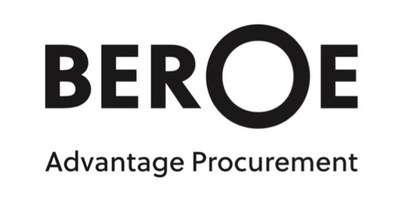Soybean Production Set to Expand, says Beroe
Comunicato Precedente

Comunicato Successivo

In addition, the export demand for soybeans in regional markets has increased in the last few years in locations like the U.S., Brazil, Australia, Argentina, and China. Consumption of soybeans increased in the U.S. at a CAGR of 2.5% and is anticipated to rise by 4% in 2021–2022 compared to last year. The primary use of soybeans in the U.S. is to extract meals and oil. While in Brazil, it increased at a CAGR of 1.6%.
Demand in Australia has grown over the last few years at a CAGR of 7% and 4% in China as compared to the previous year.
Brazil and Argentina have taken over as the top producers of soybeans. Previously, it was the United States. The US-China trade dispute is the leading cause of Brazil's increasing exports to China. Brazilian soybean exports have improved as a result of rising feedstock demand.
Soybean Prices have seen linear growth due to factors like unfavorable weather conditions, demand from import markets, and tightening global supplies. The supply-demand gap is expected to persist as long as there is an increase in demand for oil seeds.
Suppliers mostly use CBOT futures to establish soybean pricing and contract terms. Depending on the destination, the basis and freight expenses are added to the CBOT pricing. Typically, the basis is determined by the difference between the prices of cash and futures.
The timing of purchases and sales, which is influenced by the crop year's supply-demand scenario, determines the profit margin. Additionally, major soy-producing regions have started producing again at average rates. However, given that port security precautions are still in place, shipment delays are probably possible.
Some geographical factors have also contributed to the pricing of soybean and its demand. For instance, El Nino, weather conditions benefit the main soybean-producing regions (the U.S. and South America) because this season will see a good amount of rainfall, but La Lina will result in a decrease in acreage and yield because of a drop in rainfall and persistently dry weather.
Variations in the temperature of the Pacific Ocean during El Nino have an impact on the tropical rainfall pattern, which covers an area covering almost half of the globe from Indonesia to the west coast of South America. These changes in tropical precipitation have an effect on global weather patterns. The U.S. and South American regions will experience abundant rainfall, unlike APAC, which will experience drought and/or below-average rain due to El Nino.
Evaluation of the soybean market through Porter's Five Forces Analysis:
Supply Power: Farmers and traders of soybeans are the primary providers. Companies like A.D.M., Cargill, and others purchase soybeans directly from aggregators and farmers. Thus, suppliers have more control over the price of soybeans.
Barriers to New Entrants: The market for soybean seeds has little product differentiation; therefore, entry barriers are moderate.
The intensity of Rivalry: Competition depends on demand, supply and prices. For example, in the U.S., the soybean industry is hugely fragmented, and Fixed costs are lower than operational costs; hence there is little competition.

The threat of Substitutes: Due to their similar growing seasons and soil needs, soybeans and corn can be simply switched between. As a result, when choosing their favorite crop, producers and purchasers heavily consider the price of soybeans and corn.
Buyer Power: Soybean cruising Companies like A.D.M., Cargill, and Bunge—have considerable negotiation influence in an oversupplied situation as they control 60% of the soybean market.
Furthermore, technology has made a powerful impact on the soybean market. Roundup Ready 2 extends soybean's innovative and elite germplasm, has undergone a decade of development and can help farmers grow the best crop with exceptional results. Farmers are more confident as they utilize the most modern innovations in each farm. A portfolio of high-yielding elite soybean genetics has been produced due to Syngenta soybean breeders' use of the Y.E.S. (Yield Engineering System).
The U.S., Brazil, and Argentina are the best countries to buy soybeans. Brazilian soybean is expensive compared to the U.S., and hence the U.S is a viable option for sourcing soybean. The U.S. suppliers fix soybean prices and contract terms by factoring in CBOT futures, basis, and freight costs. The basis is the discrepancy between current prices and future ones. The timing of the purchase and sale of the commodity affects the profit margin.
It is safe to conclude that soybean prices are based on the seasonality of the crop, regional and global demand-supply, natural calamities, geopolitical tensions, and seasonal changes. Global procurement is recommended to mitigate the regional supply disruptions that may result due to natural calamities or political instability.
While a consolidated report helps in sourcing and procurement strategies, reliability and timeliness of the data are virtues that procurement experts pursue. Global trends, regional factors contributing to the demand, supply, pricing, and trade of commodities are just a few insights that lead to the selection of suppliers. While exploring the internet and other sources of data can be a tedious task with associated risks, companies rely on Beroe LiVE.Ai™ to gain a real-time understanding of the relationship between costs, margins, and prices affecting your category.
Beroe's technical information and cutting-edge analytics have helped multinational businesses navigate today's choppy market by facilitating smart procurement strategies and mitigating supply-chain interruptions.
About Beroe
Beroe is a global SaaS-based procurement intelligence and analytics provider. We deliver intelligence, data, and insights that enable companies to make smarter sourcing decisions – leading to lower cost, reduced risk, and greater profits. Beroe has been a trusted source of intelligence for more than 15 years and presently partners with 10,000 companies worldwide, including 400 of the Fortune 500 companies.
Learn more about Beroe - https://www.beroeinc.com
Media Contact:
Debobrata Hembram
[email protected]
Logo: https://mma.prnewswire.com/media/777512/Beroe_Logo.jpg
![]() View original content:https://www.prnewswire.co.uk/news-releases/soybean-production-set-to-expand-says-beroe-301674120.html
View original content:https://www.prnewswire.co.uk/news-releases/soybean-production-set-to-expand-says-beroe-301674120.html





